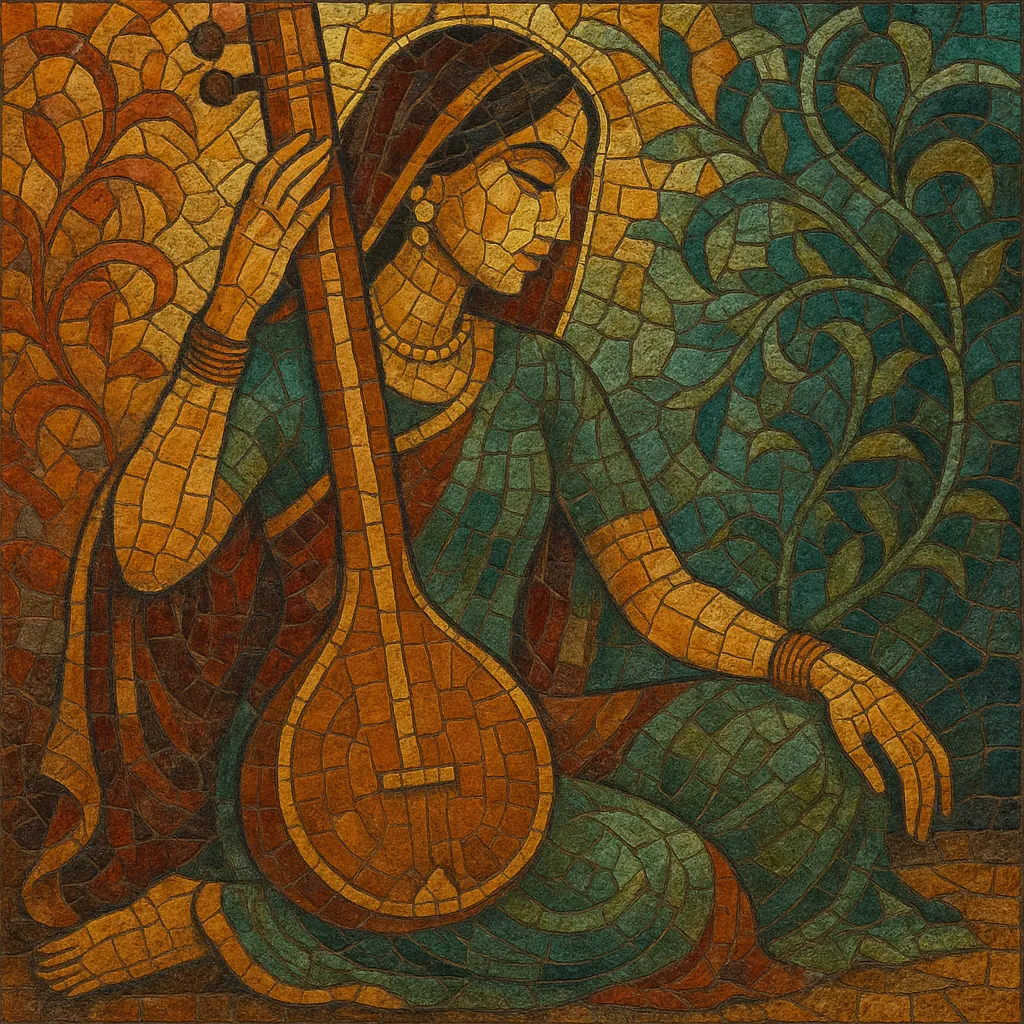Thumri is a North Indian (Hindustani) light-classical vocal genre known for its expressive, romantic character and flexible approach to raga and text.
It typically sets short, evocative lyrics—often in Braj Bhasha, Hindi, or Urdu—on themes of shṛngāra (love), viraha (separation), and Krishna devotion, prioritizing emotional nuance over strict raga orthodoxy.
Musically, thumri is associated with slow-to-medium tempi, lilting rhythmic cycles such as Dadra (6), Keherwa (8), Rupak (7), Deepchandi (14), and Addha, and a palette of “mishra” (mixed) ragas like Khamaj, Kafi, Bhairavi, and Pilu. Ornamentation is central: meend (glides), murki (grace turns), andolan (gentle oscillation), bol-banāo (word-based elaboration), and delicate taans color the line.
Historically linked to tawaif (courtesan) culture and kathak dance, thumri matured in 19th‑century Lucknow and later flourished in Benares (Varanasi), evolving two principal styles: bandish-ki-thumri (more rhythmic and dance-oriented) and bol-banaav thumri (slow, lyrical, and text-centered).
Thumri crystallized in the 1800s in the courtly milieu of Awadh, particularly Lucknow under the patronage of the Nawabs (notably Wajid Ali Shah). It developed alongside kathak dance and the culture of the tawaif salons, where expressive singing and subtle gesture were prized. From the outset, thumri distinguished itself from dhrupad and khayal by favoring lyrical intimacy, romantic poetry, and pliant raga treatment.
Two primary currents emerged:
• Bandish-ki-thumri (Lucknow): tighter rhythmic designs, brisker tempos, and a closer tie to dance idioms. • Bol-banaav thumri (Benares/Purab ang): a slower, more reflective style that stretches words and sentiments through detailed melodic shading and bol-banāo.By the late 19th century, political upheavals (including the 1856 annexation of Awadh) dispersed artists; Varanasi became a major center, nurturing the bol-banaav aesthetic. A third coloration, the Punjabi/Patiala ang, later brought more virtuoso taans and sargam play into thumri performance.
With the gramophone era, singers like Gauhar Jaan popularized thumri beyond elite salons. In the 20th century, artists such as Siddheshwari Devi, Rasoolan Bai, Naina Devi, and Begum Akhtar shaped the genre’s sound, while Bade Ghulam Ali Khan infused Patiala verve and broadened its concert appeal. Benares stalwarts—especially Girija Devi—cemented thumri’s stature on the classical stage. Tabla laggi patterns and the rise of harmonium (alongside sarangi and tanpura) became hallmarks of accompaniment.
Today, thumri remains a centerpiece of Hindustani concerts, often closing khayal recitals with an intimate, emotive turn. Its graceful ornamentation and raga-light sensibility have influenced ghazal singing and film music, while its poetic focus on shṛngāra and viraha continues to resonate with modern audiences.


